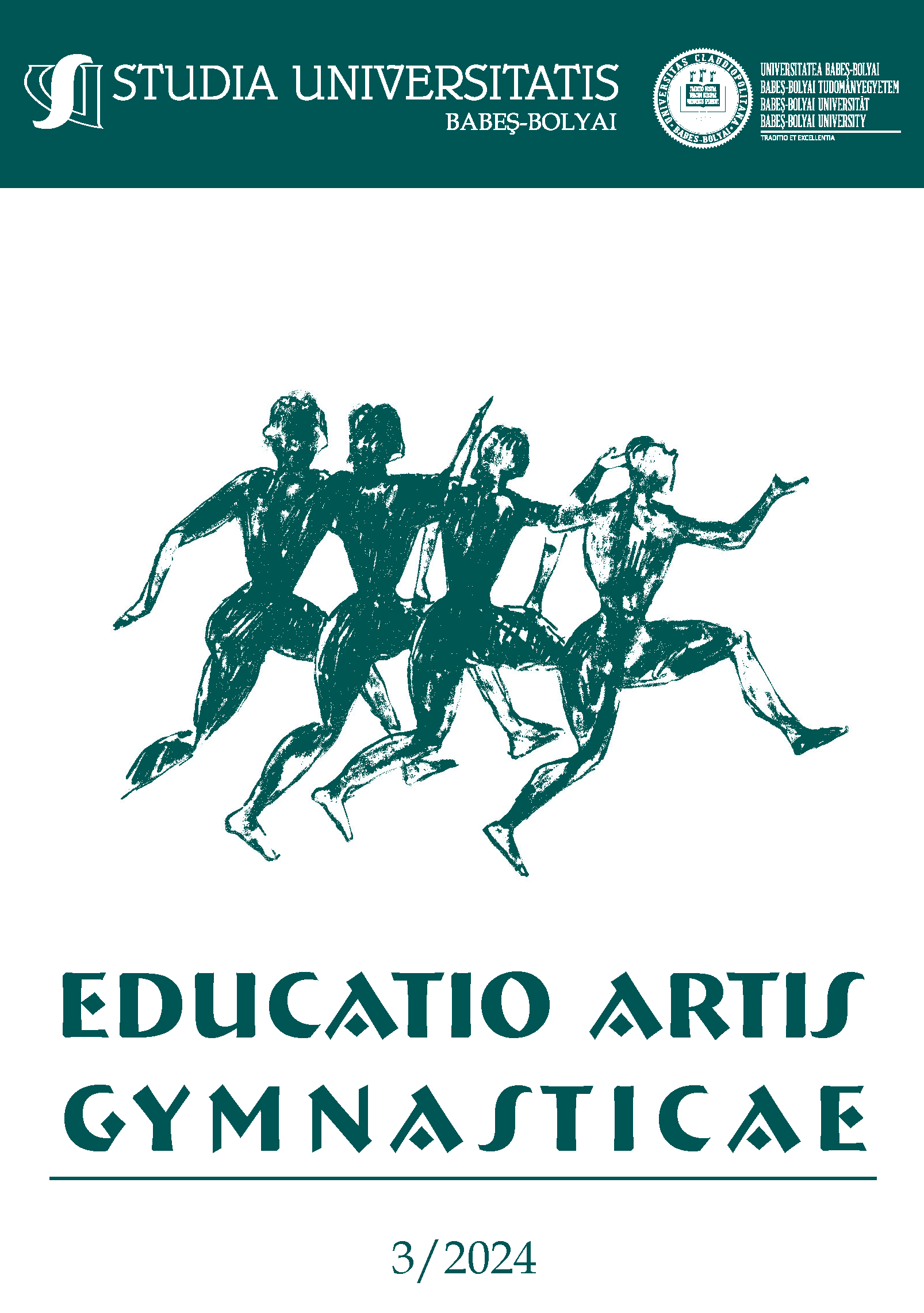The Implications of Structured Physical and Sports Activity Programs in Reducing Aggressiveness in Prisoners – A Systematic Review Analysis
DOI:
https://doi.org/10.24193/subbeag.69(3).22Keywords:
physical activity, sports, prison, aggression control, self-esteem, locus of controlAbstract
Structured and purposeful physical activity has demonstrated significant effects on personality traits and behaviors among offenders, especially in reducing maladaptive behaviors. The European Prison Rules strongly advocate for all prisoners to have regular access to organized sports and physical education. This systematic review aims to emphasize the role of physical activity in enhancing inmates’ ability to control aggression, which in turn boosts their chances of successful social reintegration and lowers the risk of recidivism by improving self-esteem and locus of control. The review included eight relevant studies sourced from scientific platforms, analyzing research published between 2000 and 2023. The studies targeted both adult and young male and female inmates, regardless of their ethnicity, all of whom participated in structured physical education and sports programs within a prison environment. These programs varied in terms of physical activity, focusing on resistance and strength training, and were consistently associated with reduced aggression, improved self-esteem, and other benefits directly related to life in detention. Through the redirection of aggressive impulses and the enhancement of self-esteem and locus of control, physical activity plays a crucial role in preventing and reducing the harmful consequences of aggressive behavior in incarcerated populations.
References
1. Berkowitz, L. (1989). Frustration-aggression hypothesis: Examination and reformulation. Psychological Bulletin, 106, 59-73.
2. Bompa, T. O. (2001). Teoria și Metodologia Antrenamentului – Periodizarea. Editura TANA, București.
3. Branden, N. (1992). The Power of Self Esteem. Health Communications Inc., Florida.
4. Cashin, A., Potter, E., Butler, T., & Ross, J. (2008). The relationship between exercise and hopelessness in prison. Journal of Psychiatric and Mental Health Nursing, 15(1), 66-71.
5. Epuran, M. (2001). Caracterizarea psihologică a sporturilor. Solicitările psihice în efort. În M. Epuran, I. Holdevici, & F. Toniţa (Eds.), Psihologia sportului de performanţă. Teorie și practică (pp. 74-88). Editura FEST.
6. Enoka, R. M. (2002). Neuromechanics of human movement (3rd ed.). Champaign, IL: Human Kinetics.
7. Findley, M. J., & Cooper, H. M. (1983). Locus of control and academic achievement: A literature review. Journal of Personality and Social Psychology, 44(2), 419-427.
8. Gallant, D., Sherry, E., & Nicholson, M. (2015). Recreation or rehabilitation? Managing sport for development programs with prison populations. Sport Management Review, 18(1), 45-56.
9. Jugl, I., Bender, D., & Lösel, F. (2023). Do Sports Programs Prevent Crime and Reduce Reoffending? A Systematic Review and Meta-Analysis on the Effectiveness of Sports Programs. Journal of Quantitative Criminology, 39, 333–384. https://doi.org/10.1007/s10940-021-09536-3.
10. Levenson, H. (1974). Multidimensional locus of control in prison inmates. Personality and Social Psychology Bulletin, 1(1), 354–356. https://doi.org/10.1177/0146167274001001119.
11. Lightning, A., & Polage, D. (2019). Exploring Locus of Control in Offender Cognition and Recidivism. Paradigms.
12. Lochner, L., & Moretti, E. (2001). Education and Crime. NBER Working Paper No. 8605.
13. Meek, R., & Lewis, G. (2014). The role of sport in reducing reoffending: An evaluation of the 2nd Chance Project Rugby and Football Academy at Portland Young Offender Institution. Journal of Criminal Psychology, 4 (3), 156-167.
14. Morgan, & Liebling, A. (2007). The Effects of Imprisonment. Willan Publishing.
15. Munoz, R. T., Brady, S., & Brown, V. (2017). The psychology of resilience: A model of the relationship of locus of control to hope among survivors of intimate partner violence. Traumatology, 23 (1), 102-111. doi: 10.1037/trm0000102
16. Mruk, C. J. (2006). Self-Esteem Research, Theory, and Practice: Toward a Positive Psychology of Self-Esteem (3rd ed.). Springer Publishing Co.
17. Nuţ, A. (2015). Strategii de dezvoltare a inteligenței emoționale în vederea optimizării performanței sportive în gimnastica artistică la nivel de junioare. (teză de doctorat).Cluj-Napoca: UBB.
18. Paunescu, C. (1994). Agresivitatea și condiția umană. Editura Tehnică.
19. Recomandarea nr. R(89) 12 a Comitetului de Miniștri al Consiliului Europei, adoptată la data de 13 octombrie 1989 cu privire la educația în penitenciare.
20. Rotter, J. B. (1966). Generalized expectancies for internal versus external control of reinforcement. Psychological Monographs: General and Applied, 80 (1), 1-28. https://doi.org/10.1037/h0092976.
21. Schmidt, S., & Panzer, M. (2020). Sport in German prisons: A critical reflection on current practice. International Journal of Sport Policy and Politics, 12(4), 641-655.
22. Tewksbury, R., & Mustaine, E. E. (2007). Correctional contexts: Contemporary and classical readings. Oxford University Press.
23. Ugelvik, T. (2014). The hidden sports of incarceration: Power, pleasure and pain in a Norwegian prison. Punishment & Society, 16 (3), 326-343.
24. Van Damme, A., Colins, O. F., & Vanderplasschen, W. (2021). The link between substance use and offending behavior among young adults: A focus on self-esteem and impulsivity. Addictive Behaviors Reports, 14. https://doi.org/10.1016/j.abrep.2021.100382.
25. Wormith, J. S. (2010). The legacy of criminal justice: An exploratory study of the impact of correctional service on recidivism. Criminal Justice and Behavior, 37 (5), 540-556.
Downloads
Published
How to Cite
Issue
Section
License
Copyright (c) 2024 Studia Universitatis Babeș-Bolyai Educatio Artis Gymnasticae

This work is licensed under a Creative Commons Attribution-NonCommercial-NoDerivatives 4.0 International License.



